Best Of
Haunting historical photos and their hidden stories
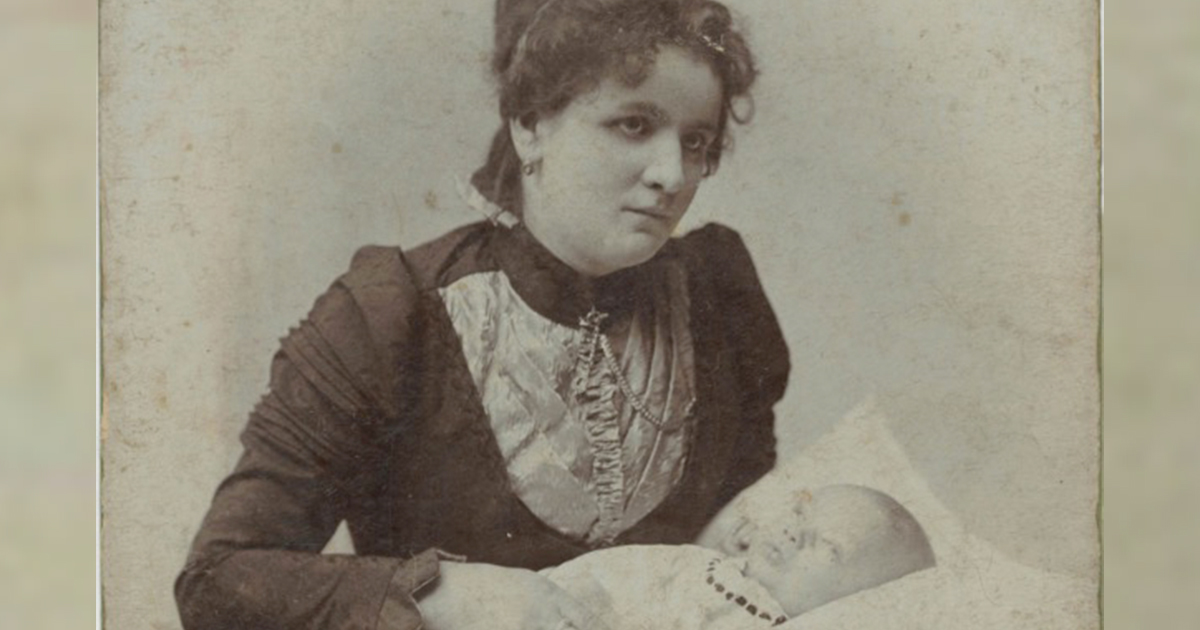

Some photos send shivers down your spine, even if they weren’t meant to. A harmless snapshot can feel unsettling when viewed through the lens of history or stripped of its context. Why does it feel so eerie? What’s the story behind it?
Throughout time, cameras have captured moments that spark curiosity, unease, and countless questions. These haunting images weren’t created to be creepy, but their mysterious details or forgotten histories make them unforgettable.
Sometimes learning the truth behind them eases the tension—but other times, it only deepens the mystery. Ready to uncover the stories behind these chilling glimpses of the past?
Mountain of bison skulls (1892)

This haunting photo, taken in 1892 outside Michigan Carbon Works in Rougeville, Michigan, captures a shocking moment in history. It shows an enormous mountain of bison skulls, harvested to be processed into bone glue, fertilizer, and charcoal. What makes this image so unsettling is the story it tells — not just about the exploitation of natural resources but about a massive loss tied to colonization and industrialization.
At the start of the 19th century, North America was home to 30 to 60 million bison. By the time this photo was taken, that number had plummeted to a staggering low of just 456 wild bison. The westward expansion of settlers, coupled with market demand for bison hides and bones, fueled a brutal slaughter that decimated the once-thriving herds. Between 1850 and the late 1870s, most herds were wiped out, leaving behind both environmental and cultural devastation.
The towering pile of bones in this photograph isn’t just a testament to industrial greed; it also reflects the deep connection between Indigenous Nations and bison, a connection forcibly severed by this large-scale destruction. The bones, stacked like a man-made mountain, blur the line between natural and manufactured landscapes, a concept that photographer Edward Burtynsky later described as “manufactured landscapes.”
Today, thanks to conservation efforts, roughly 31,000 wild bison roam North America. This photograph serves as a stark reminder of how close we came to losing them entirely—a chilling glimpse into a past shaped by choices that still echo today.
Inger Jacobsen and Bülow (1954)
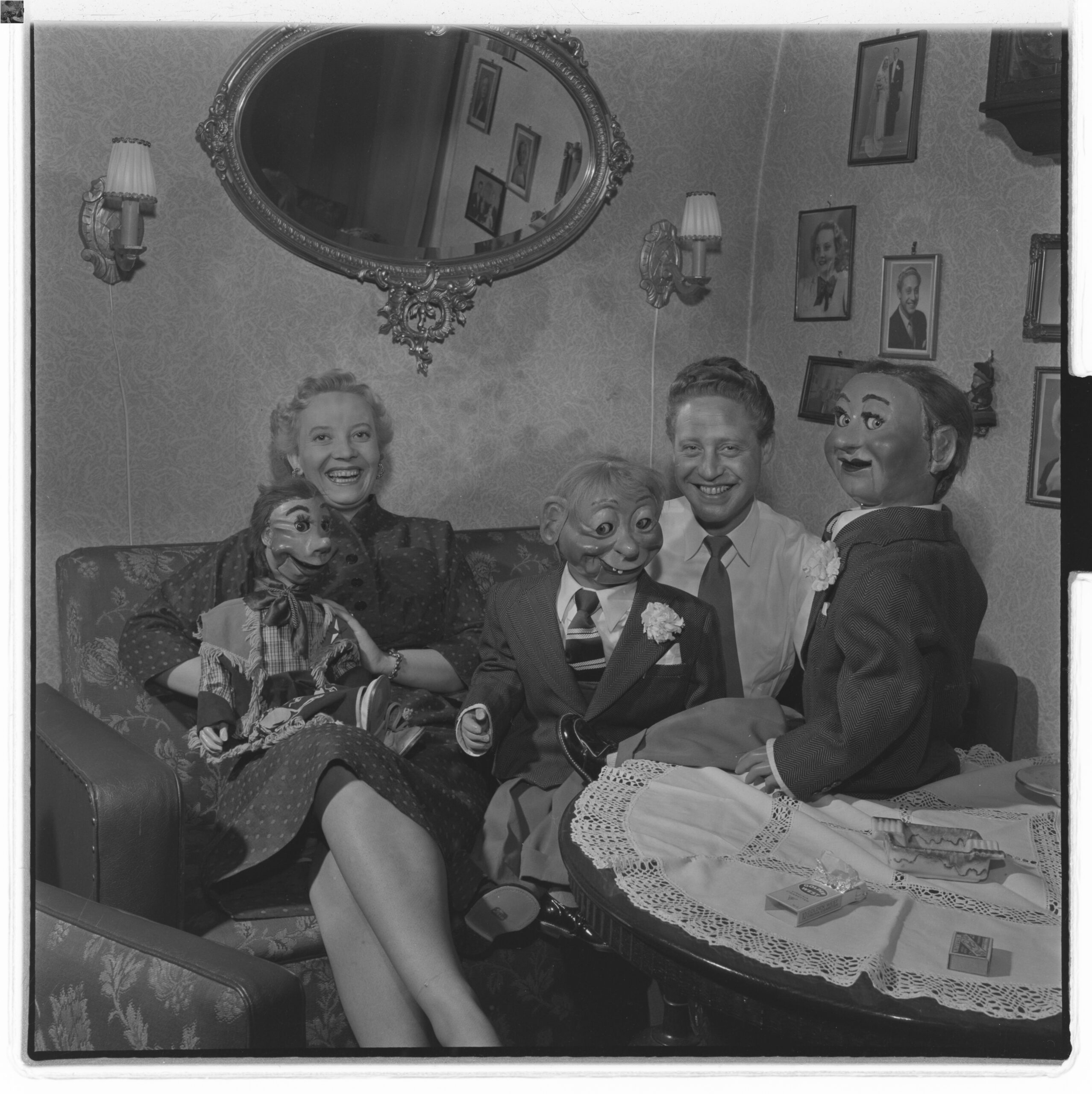
This mid-1950s photo might seem a little eerie at first glance, but it likely captures just an ordinary day in the lives of Norwegian singer Inger Jacobsen and her husband, Danish ventriloquist Jackie Hein Bülow Jantzen, better known by his stage name, Jackie Bülow.
Jacobsen was a beloved singer in Norway, even representing her country at the Eurovision Song Contest in 1962. Meanwhile, Bülow brought his unique charm and talent as a ventriloquist to audiences at a time when the art form was thriving, particularly on radio and the emerging medium of television.
The photo feels like a snapshot from a bygone era, a peek into a world that seems far removed from today. Yet ventriloquism, while less common now, hasn’t disappeared entirely. The skill and creativity of ventriloquists continue to captivate audiences, with three performers—Terry Fator (2007), Paul Zerdin (2015), and Darci Lynne (2017)—even winning America’s Got Talent. It’s proof that while the world may change, some traditions live on in unexpected ways.
The sleeping mummy trader (1875)

Mummies have always fascinated humanity, with ancient Egyptian mummies captivating imaginations for over 2,000 years. But the way they’ve been treated throughout history reveals a strange and, at times, unsettling story.
During the Middle Ages, Europeans subjected mummies to all sorts of uses—ground into powder to create supposed medicinal cures, turned into torches because they burned so well, or even used in treatments for ailments like coughs or broken bones. The belief that mummies were embalmed with healing bitumen drove this trend, though that wasn’t actually true. By the 19th century, the medicinal use of mummies had waned, but the fascination remained.
Grave robbers fueled the demand for mummies, and merchants shipped them from Egypt to Europe and America, where they became prized possessions of the wealthy. They were displayed as symbols of status or used for research. One of the more bizarre trends of the 1800s was the “unwrapping party,” where mummies were ceremoniously unwrapped in front of curious onlookers—blurring the lines between science and entertainment.
This image of a merchant resting amidst a trove of mummies highlights how these ancient artifacts became commodities, exploited for everything from medical experiments to drawing-room spectacles. It’s a reminder of how cultural treasures were once treated — and why their preservation today is so important.
The iron lungs (1953)

Before vaccines, polio was one of the most feared diseases in the world, paralyzing or killing thousands every year. In the U.S., the 1952 outbreak was the worst, with nearly 58,000 cases reported—over 21,000 people left with disabilities and 3,145 lives lost, mostly children. Polio didn’t damage the lungs directly but attacked motor neurons in the spinal cord, severing communication between the brain and muscles needed to breathe.
For the sickest patients, survival often meant being confined to an iron lung, a mechanical respirator that kept them alive by forcing air into their paralyzed lungs. Hospitals housed rows upon rows of these towering, cylindrical machines, filled with children fighting for their lives. A single image of these “mechanical lungs” is enough to capture the devastating impact of polio, a chilling reminder of the fear and uncertainty that gripped families before the vaccine’s arrival in 1955.
Even for those who left the iron lung, life was never the same, often marked by lasting disabilities. But the picture above — rows of iron lungs stretching endlessly — is a testament to both the human cost of the epidemic and the resilience of those who fought to overcome it.
A young mother and her dead baby (1901)

The haunting image of Otylia Januszewska holding her recently deceased son, Aleksander, not only captures a profound moment of grief but also speaks to the Victorian tradition of post-mortem photography. This practice, which gained popularity in the mid-19th century, served as a way to honor the deceased and preserve a final, tangible connection to loved ones, especially when the reality of death felt too overwhelming to bear.
Rooted in the concept of memento mori, meaning “remember you must die,” the idea of reflecting on mortality has deep historical roots. During the Middle Ages, paintings often included reminders of death, and earlier cultures created trinkets depicting skeletons, offering a somber but necessary acknowledgment of life’s fragility.
As photography emerged in the 19th century, it became the perfect medium to make these reflections personal and intimate. Families, now able to take photographs, would immortalize their deceased loved ones in an attempt to hold onto them, keeping their faces forever within reach. It allowed the living to mourn, yes, but also to create a lasting bond, a sense of connection beyond death.
Interestingly, today, when a loved one passes, we tend to focus on celebrating their life, often avoiding the harsh reality of their death—almost as if it’s taboo to mention it directly. In stark contrast, Victorians embraced death with a fervor, incorporating it into rituals that acknowledged its inevitable presence.
Post-mortem photography, which reached its peak in the 1860s and 70s, was a key part of that. It began in the 1840s with the invention of photography, and while not all Victorians were comfortable with capturing images of the dead, the practice became widespread, especially in the UK, USA, and Europe.
9-year-old factory worker in Maine (1911)

In 1911, life for many working-class families in America was all about hard work, long hours, and making ends meet however they could.
For Nan de Gallant, a 9-year-old girl from Perry, Maine, summers meant one thing: working at the Seacoast Canning Co. in Eastport, Maine. She wasn’t running through fields or playing with friends — she was helping her family cart sardines, working long hours alongside her mother and two sisters.
Child labor was unfortunately common in early 20th-century America, especially in industries like canning, textiles, and agriculture. For families, every extra pair of hands helped. But for kids like Nan, it meant sacrificing childhood. By the age of 9, she was already working, something that was sadly not unusual for children in her age group during this time. According to the US Bureau of Labor Statistics, 18% of kids between the ages of 10 and 15 were working in 1910.
In Maine, a law banning children younger than 12 from working in manufacturing was in place — but it excluded canning industries, which made perishable goods. That law changed in 1911, but it’s hard to know how much it impacted the lives of kids like Nan.
James Brock pours acid in the pool (1964)

In 1964, a chilling photo captured Motel Manager James Brock pouring muriatic acid into the Monson Motor Lodge pool to prevent black swimmers from using it.
This act followed a group of black activists’ attempt to integrate the segregated space in St. Augustine, Florida. Rather than allow equality, Brock chose to destroy the pool.
The image, taken by Charles Moore, symbolizes the deep-rooted racism of the time and the courage of those fighting for civil rights. Today, it serves as a reminder of how far we’ve come and how much further we need to go in the fight for equality. It teaches us about resilience, the power of resistance, and the need to confront uncomfortable truths about our history.
Coal miners returning from the depths (C.1900)

In the early 1920s, Belgian coal miners faced tough days underground, working in dangerous conditions to fuel the growing industrial revolution. After hours of grueling labor in the dark, they would squeeze together in a crowded elevator, finally heading toward the light of day. The sound of the elevator creaking and the quiet hum of their voices showed just how much they relied on each other to get through it.
Their faces, covered in coal dust, told stories of hard work and sacrifice. Every wrinkle and line showed the toll the job took on them, but it also reflected their pride in the work they did. These men powered the industries that kept everything moving, even if it came at the cost of their health and safety.
When they finally stepped out into the daylight, it was a stark reminder of the contrast between the darkness of the mines and the brightness above. But more than that, it was a reminder of their strength and resilience. They had each other, and together, they kept going. Their bond, built through shared struggles, was the heart of their community — facing challenges side by side, no matter what.
Alvin Karpis’s fingertips (1936)

Alvin “Creepy” Karpis, a notorious criminal from the 1930s, was part of the Barker gang and involved in high-profile kidnappings. After leaving fingerprints at two major crimes in 1933, he sought to erase his identity.
In 1934, he and fellow gang member Fred Barker underwent cosmetic surgery from Chicago underworld doctor Joseph “Doc” Moran. Moran altered their noses, chins, and jaws, and even froze their fingers with cocaine to scrape off their fingerprints.
Despite these efforts, Karpis was caught in New Orleans in 1936, sentenced to life in prison, and spent over 30 years behind bars, including time at Alcatraz. He was paroled in 1969.
Halloween costumes in 1930

During the Great Depression, as violence and vandalism increased, communities began to create traditions like handing out candy, hosting costume parties, and organizing haunted houses to discourage disruptive behavior. This era also saw a wider variety of costume choices for children, adding more fun to the celebrations.
Two men making a death mask (c. 1908)

Death masks have long been used to preserve the likeness of the deceased. Ancient Egyptians, for example, created detailed masks to help the dead navigate the afterlife. Similarly, ancient Greeks and Romans crafted statues and busts of their ancestors, setting the stage for the death masks that would come later.
What set death masks apart from other depictions was their focus on realism. Unlike idealized sculptures, these masks were designed to capture the true features of the person, creating a lasting tribute. Famous figures like Napoleon, Lincoln, and Washington had death masks made, which were then used for statues and busts that immortalized them long after their deaths.
Is there an image you’ve missed or one you’ve seen that stood out to you? What do you think of all these eerie pictures? Which one left the strongest impression? Feel free to share your thoughts in the comments on Facebook!
You may like
Best Of
Woman dyes her Great Pyreneese dog bright red so he won’t get stolen
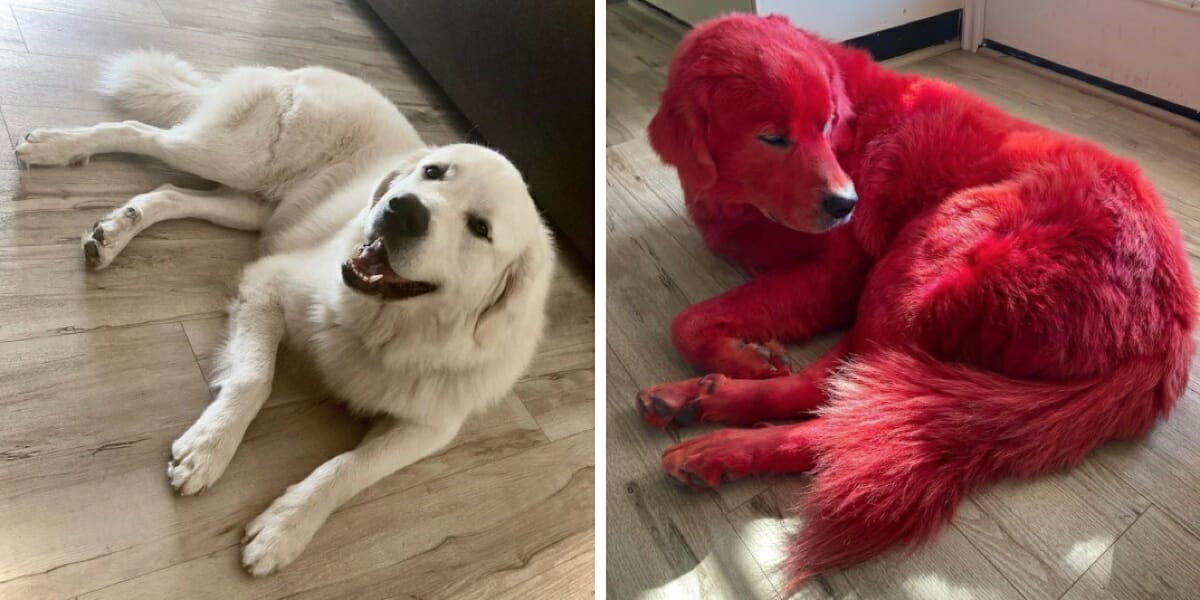

Many dog owners worry about their beloved pets getting stolen. Certain rare and expensive dog breeds can be a serious target for dognapping.
But one woman’s strategy for keeping her dog safe from thieves has generated a lot of buzz and controversy online, with some praising the idea and others questioning the owner’s motives.
Chloe is the owner of a 2-year-old Great Pyreneese dog named Dandy, who has a very unique appearance: he has bright red fur, thanks to pet dye applied by his owner:
@danthebigreddog Damn, Dandy. You’re red!❤️ #clifford #cliffordthebigreddog #bigred #dogsofttiktok #dogmom #dandelion #nostalgia #childrensbooks #funnydog #pawsome ♬ Tasty Carrots by Shou – goalsounds
Her decision to dye Dandy red immediately generated mixed responses on TikTok. Many comments read “poor dog,” wondering if the coloring is healthy, while others have been won over by the dog’s unique looks, comparing him to the character Clifford the Big Red Dog.
Chloe has assured followers that she only uses vegan, pet-safe dye (reportedly Opawz products), and in follow-up videos explained her reasonings for the dog’s dramatic makeover.
@danthebigreddog Reply to @cschubach979 this is for you and anyone else asking why? Because we can! That’s why. 🙂 #cliffordthebigreddog #LevisMusicProject #fyp #cute ♬ Island In The Sun – Weezer
She said part of the reason was to “keep him from getting stolen,” as the Great Pyreneese pup is a “rare breed in [her] area.”
Chloe also wrote that Dan seems to enjoy his new shade, as he “loves people and kids” and the red dye apparently makes the dog “more approachable.”
She also said she wanted to “educate others on safe pet dye practices,” and in other videos instructs followers how to dye their own dogs.
Dandy’s TikTok videos — which have amassed 10 million likes and over 318,000 followers on TikTok — have continued to generate debate.
Detractors have questioned Chloe’s intentions, pointing out that the dye would be unlikely to detract would-be dognappers and was just to get attention online.
But supporters have pointed out that Dandy seems to be a happy and well-cared for dog, doesn’t understand what color he is, and that the owner has a right to dye her dog for whatever reason as long as it’s safe and humane.
Dandy’s TikTok, despite its popularity, has been inactive since February. On his Instagram, the most recent post is from July — and it shows Dandy back to his natural fur color, with the dye faded:
Chloe wrote that he “needs a touch up,” and said that he would be “red soon,” and it’s unclear what color Dandy is currently.
But a notable number of the comments urged her not to re-dye the dog, preferring Dandy in his “true colors.”
What do you think of this decision to dye Dandy bright red? Is it a fun way to keep the dog safe from kidnappers, or unnecessary and poor treatment?
Please share this story, and be sure to comment with your thoughts.
Best Of
Donald Trump’s ‘unfireable’ aide earns new, cruel nickname


Have you ever heard of Natalie Harp?
She may not be the most well-known figure in Donald Trump’s inner circle, but her influence is undeniable.
In fact, she’s considered so indispensable that she’s been dubbed “unfireable”.
Who is Natalie Harp?
According to some, there are several successful strategies for getting close to Donald Trump and landing a job with him, writes The Guardian. One of them? Be young, blonde, and so obsessed with the president that even the Secret Service finds it a little weird.
That strategy certainly seems to have paid off for Natalie Harp, a former far-right cable host who is now an official aide to Trump.
So, who exactly is Natalie Harp, the woman who appears to be getting closer and closer to the POTUS?

What we do know is that she was born in 1991, which means she is 33-34 years old. Harp comes from a conservative Christian family in California.
Her father is an estate agent who founded a marketing and branding consultancy for travel companies and was the head of an ”office of innovation” at a private Christian university.
From 2009 to 2012, Natalie studied at Point Loma Nazarene University, a Christian liberal arts college in San Diego. In 2015, she graduated with an MBA from Liberty University, an evangelical college in Virginia.
With Trump on his daily golf outings
In 2019 Harp, a bone cancer survivor, stated in an interview with Fox News that Trump’s ”Right to Try” law had saved her from dying from the disease.
She later joined his presidential campaign and spoke at the Republican National Convention, comparing Trump to George Bailey from It’s a Wonderful Life, saying, “Without you, I’d have died waiting for [experimental drugs] to be approved.”
Her claims were questioned by experts, including former FDA official Peter Lurie and health sciences professor Jeremy Snyder, who noted that she had received an FDA-approved immunotherapy drug for an unapproved use — something that was already allowed before Right to Try.
After the election, Harp became an anchor for One America News Network, a far-right, pro-Trump cable channel known for spreading conspiracy theories. She repeatedly promoted Trump’s false claim that the election had been stolen.

In 2022, she left the network to join his communications team. The Washington Post reported that she often accompanied Trump on his daily golf outings, riding in a golf cart equipped with a laptop and printer to show him favorable news articles and online posts.
Harp later joined Trump’s 2024 campaign. The Bulwark reported that she was responsible for posting a controversial video referencing a “unified Reich” on his Truth Social account, which was deleted hours later. She also posted messages on his behalf and sent heated texts in his name to a major campaign donor, complaining about those running her super PAC. At the time, the group was spending millions on Trump’s campaign ads across key states.
Natalie Harp nickname
Natalie Harp has earned the nickname “Human Printer” due to her role in printing out news clips for the president, often following Trump around with a portable printer and battery pack — even sometimes running after him on the golf course — to hand him hard copies of flattering coverage.
According to The Times, which interviewed several anonymous sources, Harp’s primary role was to deliver unchallenged, highly favorable news about Trump, much of which comes from Gateway Pundit, a far-right site known for spreading conspiracy theories and false information.
In his upcoming book, Revenge: The Inside Story of Trump’s Return to Power, Axios reporter Alex Isenstadt details how Harp managed to insert herself into Trump’s inner circle. At times, she crossed boundaries she shouldn’t have, as revealed in excerpts shared by Daily Mail.
“Harp didn’t do well with boundaries,” Isenstadt wrote.

“There was the time when a surprised Melania Trump stumbled upon Harp late at night in Trump’s private quarters at Mar-a-Lago, an area that was typically off-limits to those outside Trump’s family.”
“Harp was there to deliver Trump some documents and didn’t want to wait until the morning to give them to him,” Isenstadt explained.
And in excerpts from Michael Wolff’s new book on Trump, the ”Natalie situation” once escalated to the point where Secret Service agents considered her ”a potential danger to herself as well as to the president.”
In another eyebrow-raising display, Isenstadt wrote that Harp wandered into Trump’s unoccupied bedroom when on board “Trump Force One” when the plane was being used as a decoy.
New nickname
One can have different opinions about calling Natalie a ”walking printer” – some think it’s a bit harsh, while others see it as an innocent remark relating to her dedication.
However, it seems that Natalie has now earned a new, somewhat harsher label: Harp’s devotion during the campaign led to her being called ”Fatal Attraction,” with rivals comparing her to Glenn Close’s psychotic character, Alex Forrest.
”Before long, Trump advisers jokingly began to compare Harp to Alex Forrest, the character played by Glenn Close in the 1987 movie Fatal Attraction,” Isenstadt writes in his book.
”Forrest had become obsessed with a married man and, in the film’s most memorable scene, broke into his house and boiled the family’s pet rabbit,” he added.
While sources characterized Harp as the campaign’s biggest ”migraine,” her behavior didn’t spook Trump, who brought her from Florida to the White House.
”Harp was his Girl Friday,” Isenstadt wrote.
”If Trump wanted to publish a flame-throwing post on Truth Social? Natalie was there to send it through. If he wanted to read a fawning but factually dicey story in a Trump-aligned media outlet? Natalie was there to print it out. If Trump wanted to send some random news article to a Republican member of Congress? Natalie was there to text it to them,” the author continued.
”As much as those in the senior ranks wanted Natalie gone, they knew she was unfireable,” he said.
Best Of
Why you should be eating chicken gizzards
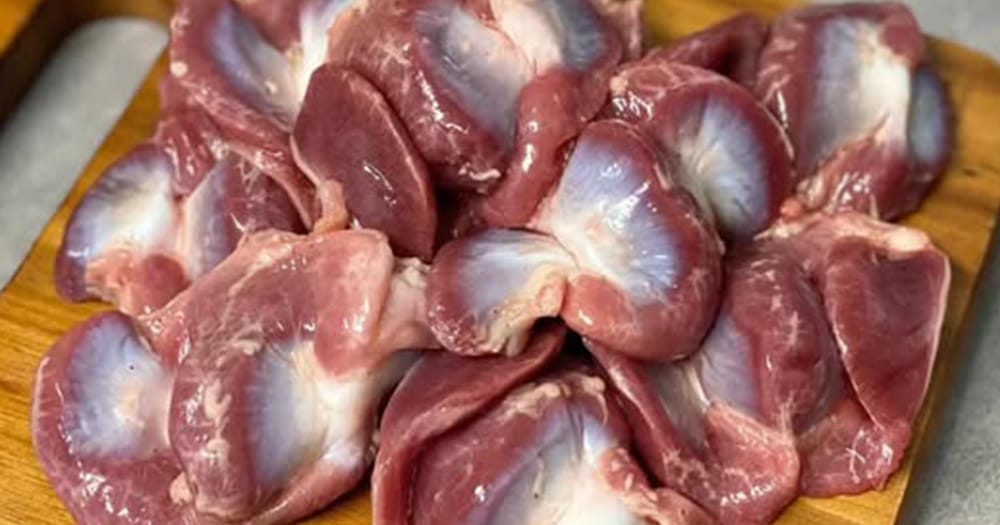

Chicken gizzards might just be the best-kept secret in the food world.
They’re packed with nutrients, insanely affordable, and ridiculously delicious when prepared right. Yet, so many people ignore them just because they fall under the category of “offal”—a term that unfairly makes them sound unappetizing.
If you’ve never given chicken gizzards a shot, you’re missing out on a powerhouse of protein, vitamins, and minerals that can fuel your body without draining your wallet. Let’s dive into why these underrated gems deserve a permanent spot on your plate.
What Even Is a Chicken Gizzard?
Think of the gizzard as the bird’s natural food processor. Birds don’t have teeth, so instead of chewing, their food moves through the crop (a storage pouch) and then into the gizzard, which acts as a super-strong grinder. Thanks to its thick, muscular walls, it pulverizes seeds and grains, making digestion possible.
The result? A lean, flavorful cut of meat with a dense, chewy texture that becomes incredibly tender when cooked the right way.
Why You Should Eat Chicken Gizzards
1. They’re a Protein Powerhouse
Gizzards are loaded with protein—around 20 grams per 3-ounce serving. Whether you’re a gym rat, an athlete, or just trying to build muscle, they’re a fantastic (and cheap!) protein source.
2. Low in Fat, High in Gains
Unlike some other meats, chicken gizzards are super lean, containing less than 3 grams of fat per serving. This makes them a great choice for anyone watching their calorie intake or aiming for a heart-healthy diet.
3. Packed With Essential Vitamins
- Vitamin B12: Essential for nerve function, red blood cell production, and energy levels.
- Niacin: Boosts metabolism, improves skin health, and supports heart health.
- Choline: Crucial for brain health, liver function, and fetal development during pregnancy.
4. Rich in Iron and Minerals
Iron helps prevent anemia and keeps your energy levels up, while selenium and zinc support your immune system and promote healing. If you’re prone to iron deficiency, gizzards can be a game-changer. Gizzards are also a good source of vitamin C, riboflavin, magnesium, copper and manganese.
5. They’re Crazy Cheap
In a world where meat prices are skyrocketing, chicken gizzards remain one of the most budget-friendly protein sources out there. You can often grab a pound for just a few bucks—making them perfect for families, meal preppers, or anyone looking to save money without sacrificing nutrition.
How to Cook Chicken Gizzards (Without Screwing Them Up)
If you’ve never cooked gizzards before, don’t worry. They’re incredibly versatile, and with the right technique, they turn out chef’s kiss delicious.
1. Boil & Stew for Ultimate Tenderness
Gizzards can be tough, but a slow simmer makes them melt-in-your-mouth tender. Boil them for 30-45 minutes with salt, garlic, and spices, then toss them into soups or stews.
2. Deep-Fry for Crispy Goodness
Want something crunchy? Coat gizzards in seasoned flour, fry until golden brown, and dip them in your favorite sauce. They’re basically the ultimate bar snack.
3. Sauté or Stir-Fry for Quick & Easy Flavor
Slice boiled gizzards and toss them in a hot pan with onions, bell peppers, and spices. The result? A high-protein stir-fry that pairs perfectly with rice or noodles.
4. Grill for Smoky Perfection
Marinate gizzards in soy sauce, garlic, and vinegar, then grill them to smoky, charred perfection. Serve with grilled veggies or a dipping sauce.
5. Slow-Cook for Fall-Apart Tenderness
Throw gizzards in a slow cooker with broth, herbs, and veggies, and let them do their thing for a few hours. The longer they cook, the softer they get.
Must-Try Gizzard Recipes
- Gizzard Adobo: A Filipino favorite—simmered in soy sauce, vinegar, and garlic for a tangy, savory dish.
- Spicy Stir-Fried Gizzards: Tossed in chili sauce with veggies for a kick of heat.
- Gizzard Soup: A hearty, comforting broth loaded with tender gizzards and root vegetables.
- Gizzard Tacos: Crispy, spicy gizzards stuffed in warm tortillas with salsa and lime.
- Gizzard Salad: A protein-packed salad with greens, tomatoes, and a zesty dressing.
The Only Drawback? The Texture (But You Can Fix That!)
Not gonna lie—if you’re new to gizzards, the chewy texture might take some getting used to. But if you cook them properly (boil first, then crisp up or stew), they become tender and juicy.
Also, like with anything, moderation is key. Gizzards contain cholesterol, so if you’re on a strict low-cholesterol diet, you might want to enjoy them in moderation.
Are There Any Risks?
Few studies have been conducted on gizzards in particular. As Medical News Today notes, some organ meats are high in saturated fat. If your cholesterol levels are above normal, enjoy these foods in moderation. Gizzards, though, have less than one gram of saturated fat per serving, so they’re unlikely to affect blood cholesterol levels or cardiovascular health.
Researchers also point out that organ meats contain purines and should be avoided by people with gout. These organic compounds raise uric acid levels and may trigger gout attacks.
If you think you’re eating too much chicken, including gizzards, consider switching to organic brands. Farmers often use antibiotics to prevent disease in chickens. A diet rich in poultry may promote the development of drug-resistant bacteria, which claim more than 23,000 lives in the United States each year, according to The Guardian. The only way to mitigate these risks is to go organic.
Bottom Line: Give Gizzards a Chance!
If you’re looking for a high-protein, nutrient-dense, and super affordable meat option, organic chicken gizzards are the way to go. They’re easy to cook, incredibly versatile, and way too underrated.
Next time you’re at the grocery store, pick up a pack and try one of these cooking methods. You might just discover your new favorite budget-friendly protein!
Would you try chicken gizzards? Let us know in the comments!
Trending
-

 Entertainment1 year ago
Entertainment1 year agoJohn Wayne’s son speaks on military service, Hollywood life and his dad, ‘The Duke’ – My Blog
-
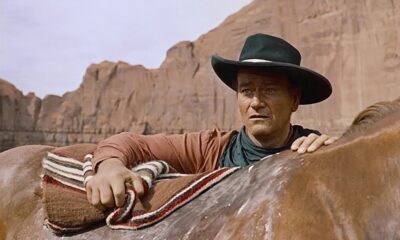
 Entertainment1 year ago
Entertainment1 year ago40 Legendary John Wayne Quotes – My Blog
-
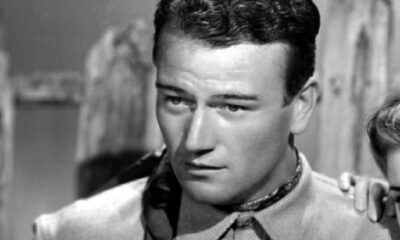
 Entertainment1 year ago
Entertainment1 year agoNew biography reveals the real John Wayne – My Blog
-
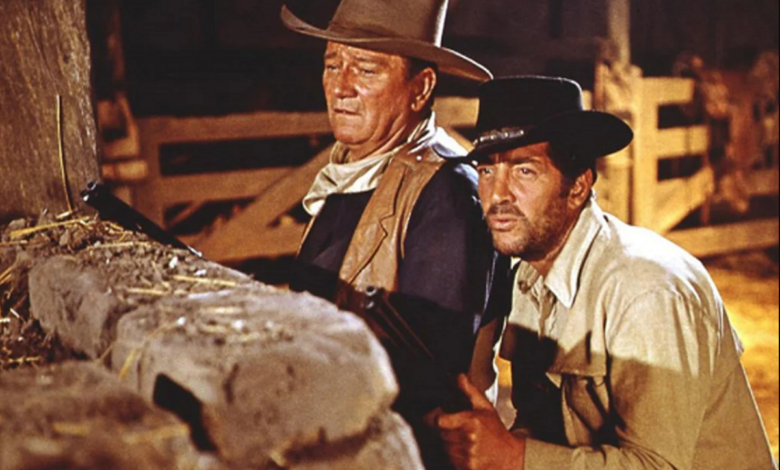
 Entertainment2 years ago
Entertainment2 years agoWhy one POPULAR ACTOR was FIRED from THE SONS OF KATIE ELDER and lost his career as a result! – Old western – My Blog
-
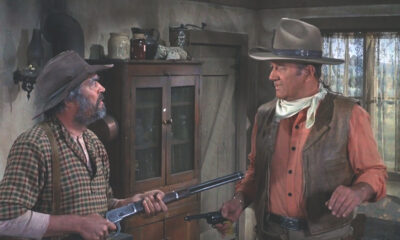
 Entertainment1 year ago
Entertainment1 year agoRio Lobo (1970) marked the last collaboration between John Wayne and Howard Hawks. – My Blog
-
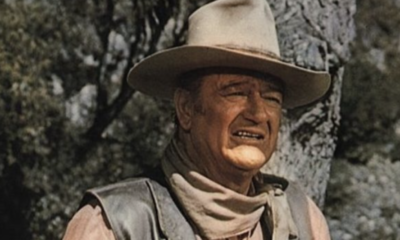
 Entertainment1 year ago
Entertainment1 year agoJohn Wayne and the ‘Bonanza’ Cast Appeared in This Epic Coors Light Commercial – My Blog
-

 Entertainment1 year ago
Entertainment1 year agoHow Maureen O’Hara Broke Her Hand During Iconic Scene With John Wayne – My Blog
-
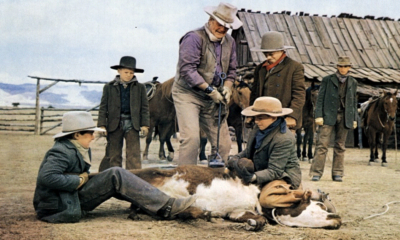
 Entertainment1 year ago
Entertainment1 year agoDid John Wayne really have a good time filming 1972’s The Cowboys? – My Blog



